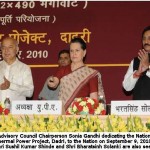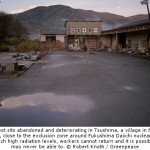
Bonn – Russia has submitted for registration its first Joint Implementation (JI) emission reduction project under the so-called “Track 2” procedure, a move that could signal a substantial increase in the number of projects under this promising Kyoto Protocol mechanism.
Under JI Track 2, greenhouse gas emission reduction projects that pass vetting by third-party certifiers and the Joint Implementation Supervisory Committee (JISC), a process called determination, can qualify to earn saleable emission reduction units. Host country approval is a key requirement.
“This is a much anticipated and very welcome development. It’s another clear sign that JI has an important role to play in directing investment to emission reduction in industrialized countries,” said Christiana Figueres, Executive Secretary of the United Nations Framework Convention on Climate Change Secretariat.
The project submitted for registration is located at the Shaturskaya Thermal Power Plant near Moscow, and is one of 15 JI projects that received the green light from the Russian Government at the end of July. The project envisages the building of an additional electricity generating unit using an energy efficient Combined Cycle Gas Turbine (CCGT).
“This is an extremely positive first step, considering that Russia is the country with the largest potential for JI. The carbon community has been waiting for this for four years, since the JISC launched the Track 2 procedure,” said JISC Chair Benoît Leguet. “We also need to look to the future, and to the essential role of JI Track 2 in the post-2012 world,” he added.
“The trend is quite clear. We’ve seen lately a flurry of determinations coming in. This first Russian project on top of that bodes well. The JISC now needs to move from being a policy-oriented body to become more project-orientated,” Mr. Leguet said.
The majority of JI projects are being developed in Russia, Ukraine and other countries in Central and Eastern Europe. There are now 234 Track 2 projects in the JI pipeline and 177 Track 1 projects registered, accounting for potential emission reductions of around 500 million tonnes of CO2 equivalent by the end of the first commitment period of the Kyoto Protocol in 2012.
The project, “Installation of CCGT-400 at Shaturskaya TPP, OGK-4, Moscow area, Russia”, has been published on the UNFCCC’s JI website. The project’s determination (equivalent to registration) will be deemed final after 45 days, provided it passes scrutiny by the JISC.
About the UNFCCC
With 194 Parties, the United Nations Framework Convention on Climate Change (UNFCCC) has near universal membership and is the parent treaty of the 1997 Kyoto Protocol. The Kyoto Protocol has been ratified by 190 of the UNFCCC Parties. Under the Protocol, 37 States, consisting of highly industrialized countries and countries undergoing the process of transition to a market economy, have legally binding emission limitation and reduction commitments. The ultimate objective of both treaties is to stabilize greenhouse gas concentrations in the atmosphere at a level that will prevent dangerous human interference with the climate system.
About Joint Implementation
Under JI, greenhouse gas emission reduction projects in any country with a commitment under the Kyoto Protocol can earn Emission Reduction Units (ERUs). Countries with an emission reduction or limitation commitment under the Kyoto Protocol can use ERUs, each equivalent to one tonne of carbon dioxide, to meet a part of their obligations under the Protocol. There are two approaches for verification of emission reductions under JI. Under Track 1, the verification of emission reductions and issuance of emission reduction units are left up to the host country, provided the country meets a series of eligibility requirements laid down by the Parties to the Kyoto Protocol. Under Track 2, projects are subject to verification procedures supervised by the Joint Implementation Supervisory Committee. For more information, visit http://ji.unfccc.int.
Source: UNFCCC Press Release dated August 30, 2010.














